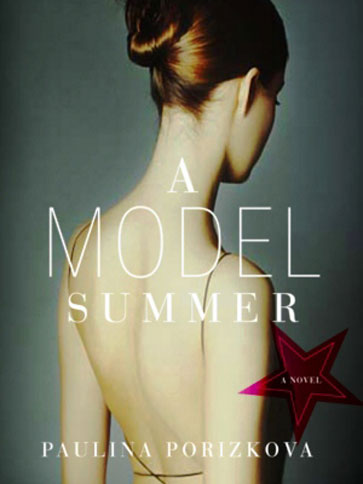Tag: Lee L. Peoples
Water for Elephants – Sam Gruen
Water for Elephants
Sara Gruen
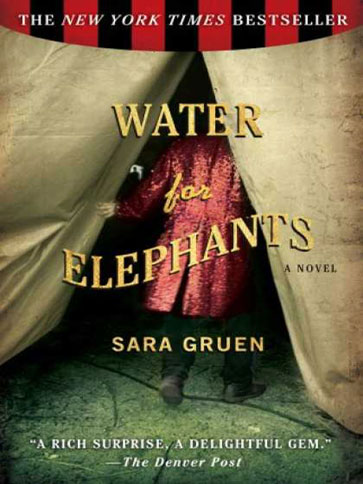 A 90-year-old man─or is he 93?─narrates the story of his one summer as a veterinarian with the Benzini Brothers Most Spectacular Show on Earth during the summer of 1931 in depression-era America. Jacob Jankowski resides in an assisted living home with other elderly people, many of whom require more medical attention than he. He is quite mentally astute for his age, yet because of his age, most of the people in charge of the facility treat him as mentally incompetent, all but Rosemary, a forty-seven-year-old nurse, who treats him and the rest of the patients/residents with the loving care, dignity, and respect they deserve as human beings. But she is moving away and will be quitting the facility, which in the end leads to Jacob’s decision to continue his life─what little he may have left─in dignity.
A 90-year-old man─or is he 93?─narrates the story of his one summer as a veterinarian with the Benzini Brothers Most Spectacular Show on Earth during the summer of 1931 in depression-era America. Jacob Jankowski resides in an assisted living home with other elderly people, many of whom require more medical attention than he. He is quite mentally astute for his age, yet because of his age, most of the people in charge of the facility treat him as mentally incompetent, all but Rosemary, a forty-seven-year-old nurse, who treats him and the rest of the patients/residents with the loving care, dignity, and respect they deserve as human beings. But she is moving away and will be quitting the facility, which in the end leads to Jacob’s decision to continue his life─what little he may have left─in dignity.
There is a circus that has come to town. It is so close to the facility that the big tent and other goings on can be observed from the window. All of the old people reminisce about their experiences in their youth going to the circus. One old man and a newcomer to the home, Mr. Joseph McGuinty, who is considerably younger than Jacob, brags about having worked in a circus, carrying “water for elephants.” Jacob becomes upset because he knows Mr. McGuinty is lying to attract the attention of the other residents; and the memories of the truth of his past life are triggered.
Flashback to young Jacob Jankowski, a veterinary student at Cornell University in his last year! Just before he is scheduled to take his final exams, after which he will graduate and receive his degree, both his parents are killed in an automobile accident. After their burial and after learning the truth of his financial situation, Jacob is unable to focus. He leaves the exam room and leaves Cornell. Distraught, he leaves with only the clothes on his back and no money in his pocket.
Because of the Depression, people were unable to pay for his father’s services; and his father, also a veterinarian, worked for people even though they could not pay him, taking whatever they could give him─eggs, chickens, whatever they had. Therefore, his parents had nothing to leave their son but debts. To pay his tuition, the house had been mortgaged.
So not being able to focus, he leaves without ever putting pen to paper. Without aim or destination, he walks and soon finds himself beside the railroad tracks, when along comes a train. Like a hobo, he hops the train with no idea where he is going. He soon learns this is a circus train and is not tossed off it because the Benzini Brothers, whose circus it is, discover he is a veterinarian; and his services are badly needed.
Working as a veterinarian that summer leads to all kinds of experiences, tantamount among them which are falling in love, getting married, and eventually working with the circus’s one elephant.
After his summer with the Benzini Brothers, he is hired by Ringling Brothers. He, along with his wife, and his growing family, spends seven years as a circus veterinarian. He then becomes the veterinarian for the Brookfield Zoo in Chicago. His seven years experience with exotic animals and his degree, in addition to bringing an elephant with him, insures him the job when the former vet suddenly dies.
Jacob, ninety years old─or is he 93? he asks himself, recognizing that his old age has caused some memory loss─struggles to hold onto his humanity and his dignity as long as he can. It is he who in his reminiscences about his circus life, his friendships, and his deep love for his wife narrates the story. The reader falls in love with Jacob and develops an even greater love and respect for “old folks.” Sara Gruen’s novel awakens the reader to the often mistreatment of and disrespect for the elderly, evoking empathy in their cause. Especially hurtful is seeing how their own families, their own children, mistreat them, or forget about them. Old people are still human beings. In many cases, their bodies may be broken, their hands and fingers gnarled, but in all cases, there is a brain inside their heads as Jacob proves. In having Jacob tell his story inWater for Elephants, the author informs us of this and reminds us of the fact that we will grow old someday. At the same time Sara Gruen affords us a moving and delightful read─so do not be misled by the title.
Reviewed by Lee L. Peoples
Recommended Must-Reads
A Model Summer – Paulina Porizkova
Trapped Inside the Story Leslie Cohen
Leslie Cohen
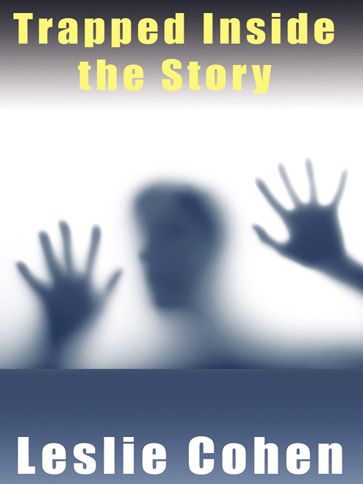 Trapped Inside the Story is so good I predict a bestseller! Written by Leslie Cohen, it is the historical biography of Holocaust survivor Naomi Kalsky, born Sonya Hebenstreit.
Trapped Inside the Story is so good I predict a bestseller! Written by Leslie Cohen, it is the historical biography of Holocaust survivor Naomi Kalsky, born Sonya Hebenstreit.
The biography opens with Sonya Hebenstreit, seven years old, Jewish, living in Poland during the Russian occupation in 1941. Her family, along with the rest of the people of Lvov, Poland, have struggled throughout the 1930s because of the Great Depression. Before the Depression, Sonya’s father, Israel, had owned his own bakery, but now he works for someone else. Then comes the Nazi invasion, and the Russian Communists leave, inviting any of the people to emigrate to Russia. Sonya’s family, unable to afford the cost of relocating, is soon at the mercy of the Nazis, who have now taken over.
Sonya’s story is told in the genre of the fairy tale—and they lived happily ever after, generally—because of the heroine’s love of fairy tales. As a child, she reveled in the stories of the Ukrainian housekeeper, Zoshka; and the heroes of those stories became her friends. Then, she learned to read herself and read all of the fairy tales she could get her hands on.
Sonya is the oldest of three children. She has a younger sister, Rosa, and a baby brother, Emmanuel. First, her father disappears. He was taken by the Germans and made to work. He manages to escape, but when he returns home, he is fatally ill. Next, her mother disappears, having gone to “volunteer” her services now that her husband is too ill. She never returns. Sonya, the oldest, is left now to take care of her father, her younger sister, and her baby brother. Finding food for everyone and milk for the baby becomes the hardest thing for Sonya.
Soon her father dies, and twelve-year-old Sonya, unable to escape her fate, continues to feed and take care of the family she has left. Emmanuel becomes ill, and in spite of herself, she has to leave him in what passes for a clinic in hopes he recovers. She never sees him again. Finally, Rosa disappears in a roundup while Sonya is away searching for food.
Due to her ingenuity, her fairy tale friends, and the non-Jews who help her in spite of the repercussions if discovered, she manages to evade capture by the Germans; and to survive, as she must, she does whatever survival dictates. Dealing on the Black Market and stealing from apartments that have been abandoned by families taken in roundups are the worst until she has to pretend she’s a Gentile, abandoning her faith. Her fairy tale friends, however, assure her she must do what she must to survive. And always, the hope of seeing her mother, her sister Rosa, and her brother Emmanuel again keeps her going.
She likens the occupation of the Germans to a fairy tale, inside which she is trapped, unable to escape, a fairy tale in which the bad guys win; and again the reader witnesses the atrocities the Jews suffer at the hands of the Nazis and at the hands of some of the non-Jews, mostly because they fear the punishment if discovered befriending or otherwise being kind to Jews. Yet, just as in other stories of the Holocaust, there are those who risk their lives to help the Jews, and this, too, adds to the pathos of the biography.
Not since The Diary of Anne Frank or Elie Wiesel’s Night have I been so touched by the memories of the Holocaust. An orphan now, the thing she feared most, having seen in her fairy tales and in school how orphans were treated, Sonya cries: “I’m an orphan—like some of the heroes in fairy tales I’m like a character in a story. It’s as if I’m trapped inside a horror story––a story so strange, so far-fetched, and so nightmarish that it can only be a fairy tale” (114).
Originally, there were 100,000 Jews in Lvov. Along came the Russian occupation. Then, on June 22, 1941, with the news of the German invasion, about 10,000 Jews left Lvov with the Russian army. On June 29, the German army entered Lvov. In July German soldiers and Ukrainian nationalists began to murder Jews on the streets, and by August 3, 4,000 Jews had been murdered. At the end of the war, there were only 600 Jews left, Sonya, fourteen or fifteen years old now, one of them, the only member of her family left.
Book Reviewed by Lee L. Peoples
Published by Level 4 Press, Inc.
13518 Jamul Drive
Jamul, CA 91935
www.level4press.com
ISBN: 978-1-933769-16-5
Middlesex – Jeffrey Eugenides
Middlesex
Jeffrey Eugenides
Wow! What a book! Jeffrey Eugenides, in telling the story of Calliope/Cal Stephanides, has written a Greek epic, much on the order of Homer’s The Iliad. Calliope in Greek Mythology was the muse of epic poetry. Webster defines an “epic” as a long narrative poem in elevated style recounting the deeds of a legendary or historical hero. Only with the help of the muse could the author pull off this manipulation of point of view from first person, with Calliope, the heroine, and later, Cal, the hero, as narrator, to third person omniscient: “I was born twice: first, as a baby girl, on a remarkably smogless Detroit day in January of 1960; and then as a teenage boy, in an emergency room near Petoskey, Michigan, in August of 1974.” And it is “at the age of forty-one,” Cal says, “I feel another birth coming on” (3):
“Sing now, O Muse, of the recessive mutation on my fifth chromosome! Sing how it bloomed two and a half centuries ago on the slopes of Mount Olympus, while the goats bleated and the olives dropped. Sing how Providence, in the guise of a massacre, sent the gene flying again; how it blew like a seed across the sea to America, where it drifted through our industrial rains until it fell to earth in the fertile soil of my mother’s own Midwestern womb” (3-4).
In Greek mythology, it was believed that it was the muse Calliope, who, as one of the nine beautiful daughters of Zeus and Mnemosyne (memory), enables the epic poet to relate things legendary or historical that only the muse could know. And it is for this reason, Calliope/Cal is able to reach all the way back to her/his immigrant grandparents as possibly the origin of, or rather an explanation for, their “hermaphroditism.” (Today, the politically correct term is “intersex.”) … thus, Calliope’s/Cal’s knowledge of her/his Greek immigrant grandparents. And it was the muse, also, who enabled her/him to narrate as a fetus and before that, as an egg lying in wait to be fertilized.
If credence is to be given to superstition, her/his condition as a hermaphrodite begins with her/his grandparents Desdemona and Eleutherios (“Lefty”) Stephanides. In the war with the Turks in the early Twentieth Century, their homeland is destroyed, and their parents are killed. Desdemona and Eleutherios (“Lefty”) migrate to America and settle in Detroit. But … on the voyage over, they, brother and sister, unnaturally in love with each other, marry; and for quite some time, keep their secret. Years later, their son marries his cousin…. Their first child, a son, is born. Then, Calliope, their second child is born, and it is not until years later that an aberration in her anatomy is detected. It is at this time that surgery is recommended to remove the male parts of her anatomy, but she refuses. Thus, she begins a journey of self discovery in which she ends up as Cal.
Hermaphroditism—the correct term is intersex— is a subject until recently, almost never talked about; and until Jeffrey Eugenides’ novel was chosen by Oprah as her book club selection this summer, very few knew anything about this subject. And true to its epic genre, Calliope and Cal are true heroes in their acceptance of their differences and their triumphs over the obstacles they face in their unique situation. Until “Oprah,” I had never accorded any truth to the myth: Hermaphroditus: in Greek Mythology, the son of Hermes and Aphrodite, who became united in body with the nymph Salmacis. So not only was it an eye opener to learn there are intersex people living quite normal, happy lives, but it was also an enjoyable, suspenseful read. I will admit to some difficulty at the beginning in accepting the omniscient first person narrator, but when I realized Eugenides was writing in the Homeric epic style, using the ubiquitous, omniscient muse, my problem was solved.
Reviewed by Lee L. Peoples
ISBN-13:978-0-312-42773-3
ISBN-10:0-312-42773-5
Reviewed by Lee L. Peoples
The Road – Cormac McCarthy
Cormac McCarthy
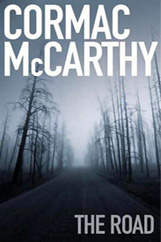 The Road by Cormac McCarthy is a novel of survival in post-apocalyptic America. The world as it was no longer exists. Black ash years later continue to rain down on everything. There are no specifics as to what actually happened to cause this apocalypse, but the few clues the author gives us suggest a nuclear bomb: “The clocks stopped at 1:17. A long shear of light and then a series of low concussions … A dull rose glow in the windowglass” (52). A father and his young son, survivors, are traveling “the road” from their home in the north in expectation of reaching the south, where they expect to survive the winter.
The Road by Cormac McCarthy is a novel of survival in post-apocalyptic America. The world as it was no longer exists. Black ash years later continue to rain down on everything. There are no specifics as to what actually happened to cause this apocalypse, but the few clues the author gives us suggest a nuclear bomb: “The clocks stopped at 1:17. A long shear of light and then a series of low concussions … A dull rose glow in the windowglass” (52). A father and his young son, survivors, are traveling “the road” from their home in the north in expectation of reaching the south, where they expect to survive the winter.
All that they own has been packed into a supermarket cart: blankets, the little food and water they have managed to salvage along the way, what extra clothes they have, anything of use they find in homes or markets that escaped the fires and overlooked by survivors before them. When the novel opens, the pistol the father carries for protection contains three bullets in it. At the end of their journey, it contains only one. He has had to kill in order to survive. And because the survivors of the apocalypse fall into two categories—the good and the bad—he has taught his son how to do what he must if something happens to him: commit suicide. The bad people consist of cannibals, pederasts, all types of evils; yet there must be others like themselves, and he hopes the south will yield those good.
We’re never told the names of any of the characters because each is representative of a member of the surviving larger group.
This novel reminded me of other post-apocalyptic novels I had read, particularly The Stand by Stephen King, an allegory symbolizing the battle between good and evil, in which we are always left with the hope that good will win out. And in this case, just as things get their worst, again there is that hope resurfacing.
Black ash swirls everywhere through their entire journey. Sometimes the snow, no longer white but gray, falls; and soon it, too, is covered with black ash. When they reach the coast, the father’s promise of blue water to his son is dashed by the black ash covering the surface.
Yet the south holds hope of a future. Whatever has caused the apocalypse has left many of the survivors, among them the father, with tuberculosis. His endless cough, full of blood, presages his destiny. The young boy, his son, is a Christ figure, and any hope of a future world lies in him. “He knew only that the child was his warrant. He said: If he is not the word of God God never spoke” (5). And later, after he has had to kill to protect his son, he tells him: “My job is to take care of you. I was appointed to do that by God. I will kill anyone who touches you” (77).
The entire countryside had been scavenged, but almost everywhere they stop—places that had not been completely burned or otherwise destroyed—the father ingeniously manages to find something of substance to keep them going. In one place he drains oil from long ago discarded oilcans to have enough for a lamp he improvises from a bottle and a rag. After all, he has a mission. The boy is his “warrant,” and though it seems he is too ill to last much longer, he must somehow keep the boy alive.
McCarthy manipulates the language so that the mostly staccato sentences and phrases give the reader the impression of dancing, more specifically, of waltzing, thus creating a lightness in the midst of the hopelessness and dangers the two encounter throughout the entire journey. Also, this simple language reemphasizes the fact that the young son, born after the apocalypse, is learning about a world he knows nothing of from the stories his father, his only teacher, tells him. In addition, the short, simple sentences are reminders of their simple goal: stay alive.
The mother, unable to endure any more of the dangers they constantly faced in their efforts to survive, and completely without any hope of survival, had taken her life sometime before. Unable to convince her husband to do the same—as well as take the boy’s life—she had used a small piece of obsidian, leaving the few bullets left in the gun for their protection. When they set out on their journey south, the son never looks back, nor does he speak of his mother. The omniscient point of view with an unknown narrator adds to the suspense, giving the reader very few clues as to how the story will end.
Reviewed by Lee L. Peoples
The Measure of a Man Sidney Poitier
Book Review
The Measure of a Man
Sidney Poitier
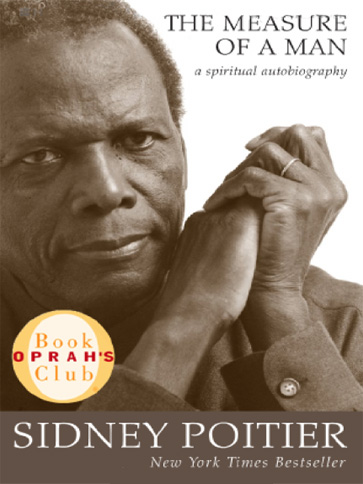 Having always thought of Sidney Poitier as a gifted, consummate actor, I was pleasantly surprised to discover the trials he went through to become that way. A current Oprah’s pick, his memoir,The Measure of a Man, is the story of how a young man with so limited advantages and resources rises to become the consummate actor.
Having always thought of Sidney Poitier as a gifted, consummate actor, I was pleasantly surprised to discover the trials he went through to become that way. A current Oprah’s pick, his memoir,The Measure of a Man, is the story of how a young man with so limited advantages and resources rises to become the consummate actor.
The consummate artist interprets rather than play acts, Poitier learned very early in his career, and in spite of acting lessons, turned to other artists to emulate, while achieving through imagination and daydreams (210). Thus, his outstanding, memorable performance in such movies as Blackboard Jungle, Cry the Beloved Country, Guess Who’s Coming to Dinner, To Sir with Love, and others. Among his many awards for his performances both on stage and in the movies is the Academy Award he received in 1964 for best actor in Lilies of the Field.
With a back and forth movement—moving from the present to the past, then back to the present—the memoir shows how his past shapes or explains his being. This memoir could be called an intellectual study into who Sidney Poitier is, how his past defines his measure as a man.
Sidney Poitier was born on Cat Island in the Bahamas, where he lived until ten and a half years old, when the family, of necessity, moved to Nassau. Until he went to Nassau, the outside world for him did not exist. Cat Island was a small, idyllic island, where the only threats Sidney met were those posed by nature and the strong discipline of his mother and father. Though very poor, his family was close. It was in Nassau that he was introduced to the prejudices toward blacks and the limitations racism placed upon them. Cat Island was idyllic, as opposed to the obvious haves vs. the have-nots of Nassau. He wore clothes made from flour sacks but loved and respected his parents so much he did not make a big deal out of the teasing he took from his schoolmates: “…knowing that my mom and dad were doing the best they could gave me the strength to suck it up and move on” (39).
He dropped out of school by the age of thirteen and was sent away from this environment—friends, even his older brother, were sent away because of the trouble they had gotten into because of the influence of the environment. (On Cat Island, the only dangers he had faced were those posed by nature.) Little Sidney was jailed briefly for stealing corn. So his father sent him to Miami to live with a brother ten years older than he. There, he also encountered race issues but did not let them interfere with what he had chosen for himself; so “the Jim Crow way of life had trouble overwhelming me” (42).
Sidney Poitier never compromised his values, refusing to play parts he did not believe in. Yet, this is exactly what his own race accused him of (118). Of course, he’s angry about what he and other blacks had to endure, but “… I’ve learned that I must find positive outlets for anger or it will destroy me. I have to try to find a way to channel that anger to the positive, and the highest positive is forgiveness” (128).
There are lessons to be learned from this memoir on how to achieve in spite of the obstacles life and society may place in the way, for one’s response is the measure of a man; and I agree that once again Oprah is right on in her selection. For example, hurt over the failure and breakup of his first marriage, he does not fail in fulfilling his father’s legacy: the measure of a man is how well he takes care of his children (181). He is quite proud of his six talented and intelligent daughters he helped raise in spite of his divorce from their mother. Poor though he was, his own father, Reggie Poitier, always took care of his family, and in this respect, as well as others, Sidney chose to emulate him.
I would say “the measure of a man” is one’s response to all of the opposition one is faced with in society, and Sidney Poitier certainly lives up to his measure as a man in all the racial opposition he encountered as a black man on his journey to becoming the consummate actor, beloved by so many.
Reviewed by Lee L. Peoples
Dying Was the Best Thing that Ever Happened to Me: Stories of Healing and Wisdom Along Life’s Journey – Author William E. Hablitzel, MD
DYING WAS THE BEST THING THAT EVER HAPPENED TO ME
Stories of Healing and Wisdom Along Life’s Journey
William E. Hablitzel, MD
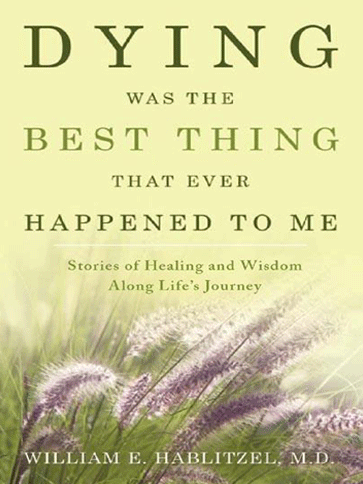 This book will come as a surprise to many people who have not experienced the spirituality of a physician. Dr. Hablitzel’s belief in miracles and a higher power comes as no surprise to me, however, having been told a number of years ago by the surgeon who performed the triple bypass on my husband, “It was worse than we thought. It’s now all up to him and….” He knew I knew he meant God. I suppose being a scientist he was reluctant to name this higher power.
This book will come as a surprise to many people who have not experienced the spirituality of a physician. Dr. Hablitzel’s belief in miracles and a higher power comes as no surprise to me, however, having been told a number of years ago by the surgeon who performed the triple bypass on my husband, “It was worse than we thought. It’s now all up to him and….” He knew I knew he meant God. I suppose being a scientist he was reluctant to name this higher power.
Dr. Hablitzel in this beautifully written self-help motivational first book with a carpe diem theme (Do not put off for tomorrow what you can do today), readily acknowledges the existence of a higher power, God, in the scheme of life. He tells the story of lessons learned from his patients, how many of them did not know how to live until they were near death, or in the case of the title story, actually experienced death.
Until Alexander Kipton experienced full cardiac arrest, he had never really taken time to enjoy life: Alex Kipton found uncertainty through death. It was the best thing that ever happened to him, not because he got a second chance for life, but because he began experiencing life for the first time. With the uncertainty of tomorrow, he learned to make use of each day, and in all of those days he found meaning and happiness.
Each of the other twelve chapter titles is either a summation of a patient’s experience or a direct quote from a patient, one or more of the many teachers in the form of patients his practice of medicine brought to him: this doctor was changed by his patients; his patients were changed by him.
Carol, another of his patients, was diagnosed with a terminal illness. She had been too busy to marry her fiance of many years, but when faced with her mortality, having been diagnosed with aneurysms on the brain, she threw caution to the wind and planned to get married the next day and travel. When told that the neurosurgeons didn’t think she needed to stay in the hospital—but they do want you to think about going to the specialty center in Baltimore as soon as possible. They might have something to offer that we don’t—Carol smiled and said, “Thanks, but maybe later. First, Troy and I are getting married—tomorrow. Then we are going to travel. We don’t know where, or for how long.” Later, she tells her doctor, “When you always have tomorrow, it’s too easy to waste today. I’ve spent so much time looking ahead that I couldn’t see happiness right in front of me.”
A medical doctor at peace with himself, who in spite of science is able to experience and embrace the spiritual, has given a profound insight into the examination, prognosis, and care required for healing of most of his patients. Other patients who had bad news coming were treated with the caring that made the next step easier to bear, even when the next step was death.
“There are no coincidences” was quite a unique way of expressing the power and relationship of God in our daily lives. The peace on the faces of those who were dying knew of God’s peace. The meaning and role of religion in living, in sickness, and in dying proved to be most valuable in the stories of this book. The reader is given a new appreciation for the beauty of life, the creation, and the Creator. The value of listening, forgiving, living now ( carpe diem ), and the power of prayer are extraordinary lessons presented in the stories.
This book is a must read, especially if you yourself or a loved one is faced with a serious illness. Were it not for my personal experience, I would probably have found it hard to believe that a scientist—a medical doctor—could be so spiritual, and as a result, so compassionate.
Contributing to this review is my brother-in-law Linon Loyd, who was here during the death of my younger brother. He picked up the book and could not put it down until he finished. We predict a best seller.
Reviewed by Lee L. Peoples
Divorce: It’s All about Control – Author Stacey D. Phillips
Divorce – It’s All About Control
by Stacy D. Phillips
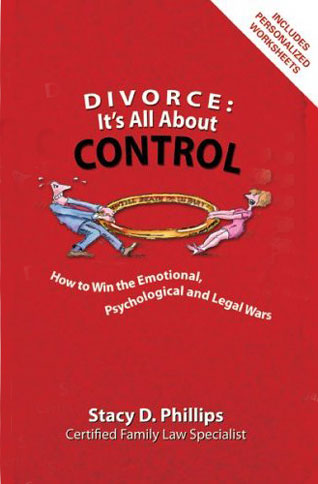 Stacey Phillips’s book is not just for couples contemplating divorce. It is beneficial for anyone in a relationship, for heeding her advice can in many cases avoid that dreaded breakup. Taking a good look at one’s interaction with his/her mate can definitely give insight into a better relationship.
Stacey Phillips’s book is not just for couples contemplating divorce. It is beneficial for anyone in a relationship, for heeding her advice can in many cases avoid that dreaded breakup. Taking a good look at one’s interaction with his/her mate can definitely give insight into a better relationship.
This is a book “that fully explains the single most important aspect of understanding what lies beneath the surface of the marriage wars—be they legal, psychological or emotional—the ‘X’, or should I say ‘Ex’ factor: Control!”
At the heart of control the author says are the big six:
• Money/Property/Wealth
• Children
• Health (Physical and Mental)
• Loss of Love/Intimacy
• Growth (Personal and Professional)
• Fear (Physical/Emotional/Psychological)
Not only does this self-help book make for interesting, engrossing reading, but complete with worksheets, it personally involves the reader. The author addresses control as it relates to the dating relationship or marriage or divorce. She notes “…control does not have to be a problem so long as the dynamic between couples is working…if couples cam come to terms—if they can implement more quality in their relationship—control tends to take a back seat. Such couples stand a very good chance of keeping control issues under control!”
So the goal of the lessons and the hands-on assignments in the book is that anyone who is out of control, whether it is in marriage/love relationship or in the process of divorce, will be motivated to take complete control, not of others but of self. Examples of assignments come under headings such as Money/Assets/Liabilities, Children, Health, Loss of Love/Intimacy, etc.
Stacey Phillips is a certified family law specialist, who in her practice witnesses the wars between couples divorcing. She wrote this book in hopes of making a positive difference in the lives of her clients. While the book is nonfiction, and some of the characters and scenarios depicted are real, others are fictional. A sincere reading of the book can quite possibly lead to a reconciliation, or if not, a more peaceful divorce. Her advice always is “Work it out. Settle your case if you can.” This book shows the reader how. She even gives advice on choosing the right attorney should the divorce be inevitable.
Reviewed by Lee L. Peoples
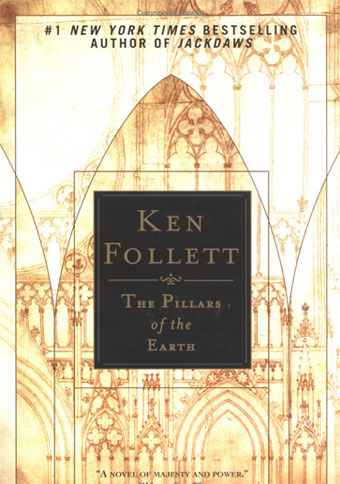
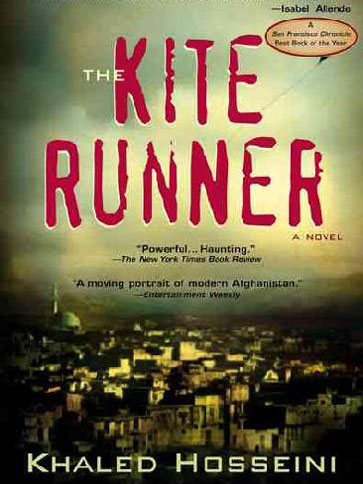
 In spite of having fled his country, the author’s love of his country is clearly evident in both of his books. In this book in particular, his story of two women not only exhibits his love for his country but also his respect for women and their rights. Mariam and Leila, both forced into marriage to a much older man, first meet as rivals in a polygamous marriage but become the closest of friends and each other’s protector from their abusive husband.
In spite of having fled his country, the author’s love of his country is clearly evident in both of his books. In this book in particular, his story of two women not only exhibits his love for his country but also his respect for women and their rights. Mariam and Leila, both forced into marriage to a much older man, first meet as rivals in a polygamous marriage but become the closest of friends and each other’s protector from their abusive husband.